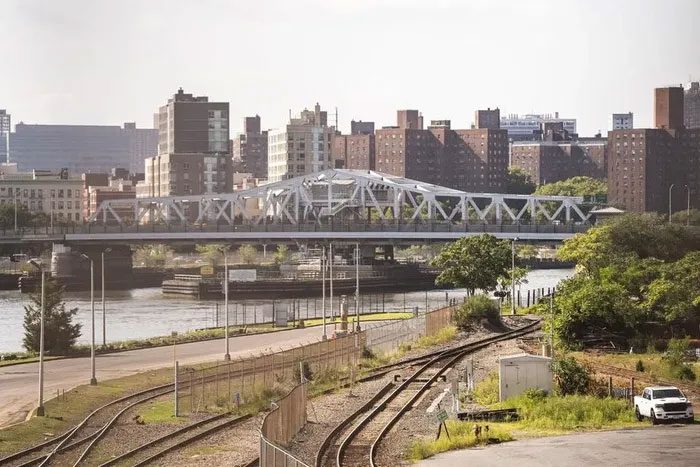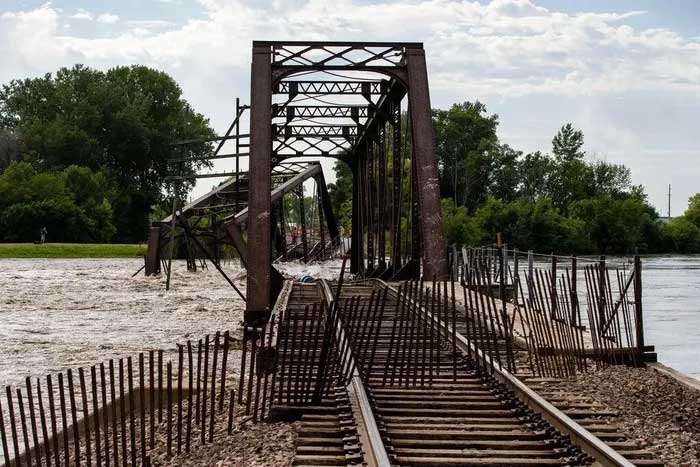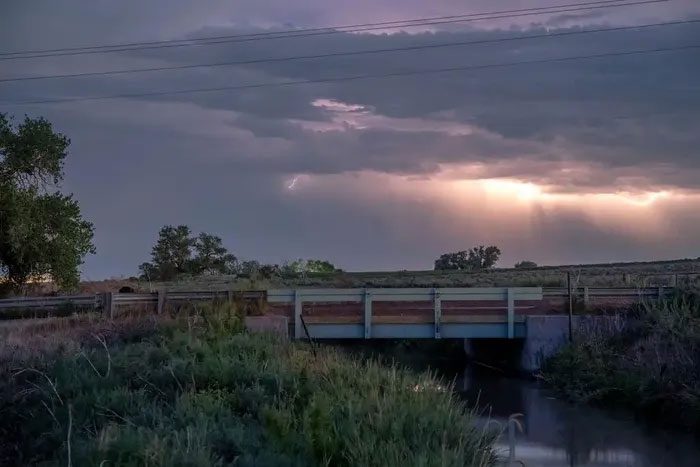Many bridges in the United States, built decades ago, are unable to adapt to climate change and may collapse due to extreme weather events.
When daily temperatures reach 35 degrees Celsius, the surface of the Third Avenue Bridge connecting the Bronx and Manhattan in New York warped due to expansion. A steel bridge connecting Iowa and South Dakota was washed away due to extreme temperatures and subsequent flash floods.

The surface of the Third Avenue Bridge in New York warped due to extreme summer temperatures.
According to The New York Times, 25% of the bridges in the U.S. built before 1960 are in urgent need of repairs. Extreme temperatures and floods caused by climate change have shortened the lifespan of these bridges, engineers say. This is a silent but frightening danger.
Inability to Adapt
“We are facing a global crisis related to extreme weather phenomena,” said Dr. Paul Chinowsky, a researcher studying the impact of climate change on infrastructure at the University of Colorado Boulder.
According to him, major bridges are often constructed over many decades. During that time, climate change had not reached such severity, so engineers did not consider using materials that could adapt to extreme temperatures. As a result, these bridges significantly weaken when subjected to continuous contraction and expansion due to severe weather.
“It’s so hot that concrete and steel are coming apart; bridges can collapse like a child’s toy,” Dr. Chinowsky stated.

A bridge connecting Iowa and South Dakota collapsed after a flash flood.
The world has just experienced the hottest summer in history. Much of the global infrastructure, from highways to runways, has been severely affected. Bridges are particularly vulnerable victims of climate change.
“Steel and concrete bridges are a type of infrastructure designed and built over many decades,” said Pete Buttigieg, the U.S. Secretary of Transportation. “This type of infrastructure takes a long time to update and repair; their flaws are becoming apparent as climate change intensifies.”
A study published in the journal Plos One found that extreme temperatures from climate change could cause one in four of the largest bridges in the U.S. to collapse by 2050. By 2040, most bridges in the “land of the free” will be severely damaged and in urgent need of repairs.
Another study revealed that extremely high temperatures are warping bridge surfaces. Abnormal rainfall is also causing “bridge erosion” and landslides around bridge foundations. This is a leading cause of bridge collapses worldwide.
Warping, Cracking, and Collapsing
Colorado is one of the first areas to apply climate change research to road and bridge design since 2018.

Dr. Hussam Mahmoud is a civil engineer and professor at Colorado State University.
The state requested Dr. Hussam Mahmoud, a civil engineer and professor at Colorado State University, to examine the deterioration and stress of steel bridges. “My research shows a serious problem,” Dr. Mahmoud observed.
For decades, sections of a bridge have been connected by steel joints. This helps the bridges adapt to expansion and contraction due to temperature changes.
However, due to climate change causing sudden temperature shifts, steel joints must expand and contract continuously, according to Dr. Mahmoud. The problem worsens as the world experiences the hottest summer in history, causing excessive expansion of joints and cracking of the concrete surface. “Bridges can suffer permanent damage if the concrete cracks,” he said.
Expanding joints also lead to numerous other issues. With healthy joints, a bridge can bend slightly to withstand the weight of trucks. However, when faced with high temperatures, the load-bearing capacity of these bridges decreases, making collapse a real possibility.
“Simply put, the bridges will lose their load-bearing capacity because the beams and steel joints weaken,”” Dr. Mahmoud explained. He noted that a bridge under normal conditions has a lifespan of up to 50 years. Yet, some bridges in areas affected by climate change are no longer safe for use even after just 10 years.
Dr. Mahmoud studied 80,000 steel bridges across the U.S. to assess the impact of climate change on them. He found that smaller bridges are more susceptible to damage because they are designed to handle lighter loads, making them less adaptable to extreme weather.

Dr. Mahmoud’s research shows that the smaller the bridge, the lower its ability to withstand extreme weather.
“The bridges I studied were designed according to regulations, but engineers back then did not anticipate climate change would be as severe as it is now,” he said. “Many bridges have twisted beams, swollen joints, and peeling concrete. They will collapse soon.”
Other studies indicate that climate change is causing temperature differentials with higher amplitudes and frequencies than normal, according to Dr. Royce Floyd, a professor of engineering at the University of Oklahoma. Continuous temperature differences cause extreme expansion of bridge surfaces, warping or cracking. Steel load-bearing bars can even shift from their designed positions, Dr. Floyd stated.
This is what happened to three major bridges in the U.S. this year. These bridges were built or renovated without considering the severe impacts of climate change.
“Without planning for extreme weather events and applying climate research to construction, bridges in your country will face similar issues,” he asserted.


















































